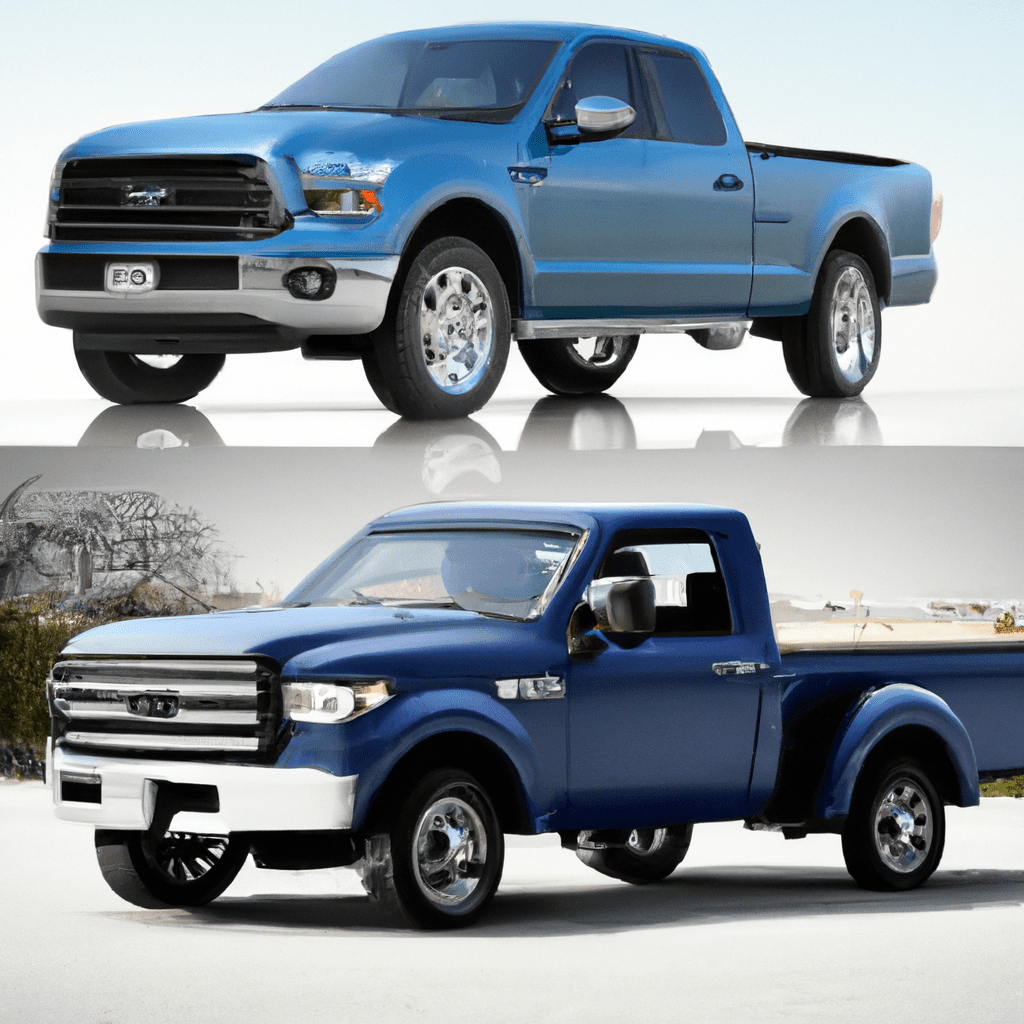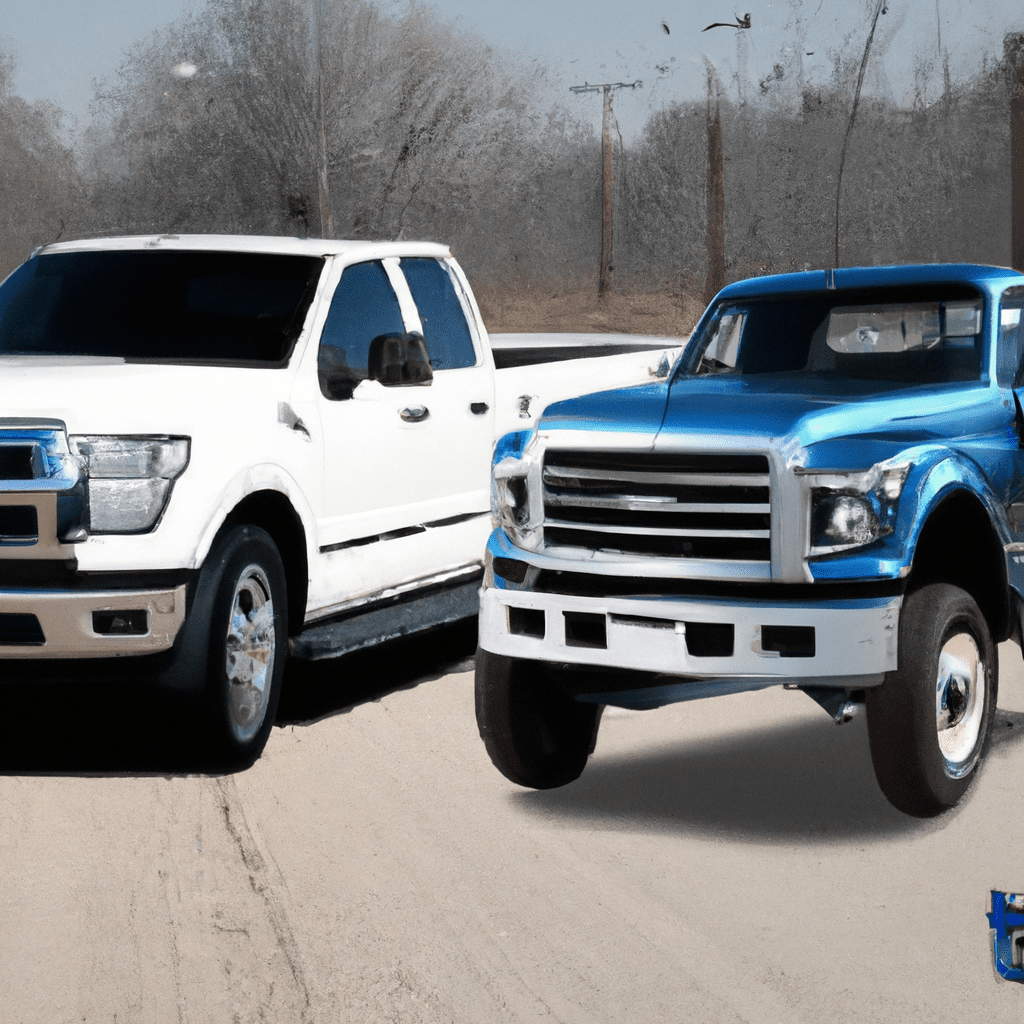Get ready to take a nostalgic journey through the history of Ford trucks as we explore their remarkable rise, from the iconic Model TT to the unbeatable F-Series. Reviving memories of rugged engines and timeless design, this article will transport you back in time, tracing the evolution of these mighty machines. Buckle up and get ready to discover the extraordinary story behind the rise of Ford trucks – a tale that’s sure to keep you captivated from start to finish.
The Model TT
Introduction to the Model TT
The Model TT was the first-ever truck produced by Ford Motor Company, introduced in 1917. This groundbreaking vehicle marked the beginning of Ford’s legacy in the truck industry. Built as a modification of the Model T car, the Model TT was specifically designed to meet the growing demand for a reliable and capable workhorse.
Features of the Model TT
The Model TT boasted several features that set it apart from its contemporaries. It had a stronger chassis and rear axle, allowing it to carry heavy loads with ease. The truck featured a robust four-cylinder engine that delivered impressive power and torque, making it suitable for a range of industrial and commercial applications. With its sturdy construction and dependable performance, the Model TT quickly gained a reputation for reliability and efficiency.
Success and Impact of the Model TT
The Model TT revolutionized the transportation industry, providing businesses with a reliable means to transport goods and materials. Its commercial success paved the way for future generations of Ford trucks, as it showcased the potential of trucks as a fundamental tool for the modern workforce. The Model TT’s unrivaled performance and durability set the stage for Ford’s commitment to producing high-quality trucks that catered to the evolving needs of customers.
The First Generation: 1948-1952
Introduction to the First Generation
The first generation of the Ford F-Series trucks was introduced in 1948 and continued till 1952. This lineup of trucks was a significant departure from previous models, sporting a fresh and modern design that captured the post-war spirit of optimism and progress.
The Birth of the F-Series
The F-Series was born out of the desire to offer customers a more versatile and refined truck. Ford’s engineers and designers focused on creating a vehicle that not only provided practicality but also delivered comfort and style. The result was a range of trucks that quickly gained popularity among consumers and set the stage for Ford’s dominance in the truck market.
Changes and Improvements
During the first generation, the F-Series went through several notable changes and improvements. In 1951, Ford introduced the industry’s first integrated pickup bed, which offered enhanced functionality and convenience. Additionally, in 1952, Ford introduced an optional V8 engine, providing increased power and performance. These advancements solidified the F-Series’ reputation as a versatile and capable truck that could handle a wide range of tasks with ease.

The Second Generation: 1953-1956
Introduction to the Second Generation
The second generation of the Ford F-Series trucks, spanning from 1953 to 1956, aimed to build upon the success of its predecessor. This generation introduced significant design changes and innovative features that further solidified the F-Series as an industry leader.
Redesign and Innovation
In 1953, the F-Series underwent a complete redesign, introducing a sleeker and more streamlined appearance. The iconic grille, featuring horizontal bars and a prominent Ford emblem, became a defining characteristic of the F-Series trucks. Additionally, Ford introduced innovative features like a one-piece windshield and a redesigned interior that prioritized driver comfort and convenience.
Market Response and Sales
The market response to the second generation F-Series was overwhelmingly positive. The trucks’ sleek and modern design resonated with consumers, while the introduction of power steering and improved suspension further enhanced their appeal. The second generation F-Series achieved record-breaking sales, solidifying Ford’s position as a frontrunner in the truck industry.
The Third Generation: 1957-1960
Introduction to the Third Generation
The third generation of the Ford F-Series trucks, spanning from 1957 to 1960, marked another significant milestone in the evolution of these iconic vehicles. With this generation, Ford aimed to combine style, performance, and utility to cater to the diverse needs of truck enthusiasts.
Styling and Features
The third generation F-Series featured a bold and futuristic design that set it apart from its competitors. The trucks boasted a wrap-around windshield and a distinctive hood design, giving them a distinctive and stylish appearance. In terms of features, the third generation introduced power brakes and a factory-installed air conditioning system, raising the bar for comfort and convenience in trucks.
Introduction of the Ranchero
One of the notable introductions during the third generation was the Ford Ranchero, introduced in 1957. This innovative vehicle combined the practicality of a pickup truck with the style and comfort of a car. The Ranchero quickly gained popularity among consumers, creating a new market segment for “car-trucks” and inspiring other manufacturers to follow suit.

The Fourth Generation: 1961-1966
Introduction to the Fourth Generation
The fourth generation of the Ford F-Series trucks, spanning from 1961 to 1966, aimed to push the boundaries of design and functionality even further. This generation witnessed significant updates and improvements that further solidified the F-Series’ position as an industry leader.
Updated Design and Features
The fourth generation F-Series featured a bold and muscular design that reflected the changing aesthetic preferences of the era. The trucks had a wider and lower stance, contributing to improved handling and stability. Ford also introduced twin I-beam front suspension, providing better ride quality and handling precision. The fourth generation trucks also featured enhanced interior comfort and improved safety features.
The Adventurer and the Camper Special
During the fourth generation, Ford introduced two notable editions: the Adventurer and the Camper Special. The Adventurer was designed for customers seeking a stylish and well-equipped truck, featuring unique exterior accents and a luxurious interior. On the other hand, the Camper Special catered to camping enthusiasts, offering enhanced towing capabilities and special features to accommodate recreational vehicle enthusiasts.
The Fifth Generation: 1967-1972
Introduction to the Fifth Generation
The fifth generation of the Ford F-Series trucks, spanning from 1967 to 1972, witnessed bold styling changes that captured the spirit of change and innovation of the era. This generation introduced several groundbreaking features that further propelled the F-Series’ popularity among truck enthusiasts.
Bold Styling Changes
The fifth generation trucks featured a bolder and more muscular design, characterized by a wide and prominent grille and a robust overall appearance. The trucks had larger proportions, providing increased cabin space and cargo capacity. Ford also introduced a range of vibrant color options, allowing customers to personalize their trucks according to their preferences.
Introduction of the SuperCab
One of the significant introductions during the fifth generation was the SuperCab. This extended cab variant of the F-Series trucks offered increased seating capacity and additional storage space behind the front seats. The SuperCab proved to be a hit among customers, appealing to those who desired a versatile truck that could accommodate both passengers and cargo.
The Sixth Generation: 1973-1979
Introduction to the Sixth Generation
The sixth generation of the Ford F-Series trucks, spanning from 1973 to 1979, witnessed significant changes in both design and engineering. Ford aimed to cater to the diverse needs of customers by introducing a range of full-size and heavy-duty trucks.
Full-Size and Heavy-Duty Trucks
With the sixth generation, Ford expanded the F-Series lineup to include a wide range of full-size and heavy-duty trucks. Customers could choose from various bed lengths and cabin configurations to suit their specific requirements. Ford also focused on improving fuel efficiency and emissions control, introducing new engine options and technologies.
Introduction of the F-150
One of the most significant milestones during the sixth generation was the introduction of the F-150 in 1975. Positioned between the F-100 and F-250, the F-150 offered a balance between performance, capability, and affordability. The F-150 quickly became a customer favorite and remains one of the most popular trucks in the F-Series lineup to this day.
The Seventh Generation: 1980-1986
Introduction to the Seventh Generation
The seventh generation of the Ford F-Series trucks, spanning from 1980 to 1986, witnessed a shift towards aerodynamic design and improved fuel efficiency. This generation introduced several groundbreaking features and innovations that further cemented Ford’s position in the truck market.
Aerodynamic Redesign
The seventh generation trucks featured a more aerodynamic design, characterized by a sloping hood and a flatter windshield. This design change significantly reduced wind resistance, contributing to improved fuel efficiency. Ford also introduced new lightweight materials, such as aluminum, to reduce overall weight and enhance performance.
Introduction of Diesel Engines
During the seventh generation, Ford introduced diesel engines to the F-Series lineup, offering customers increased power and improved fuel economy. The availability of diesel engines expanded the range of options for customers, allowing them to choose a truck that suited their specific needs and preferences.
The Eighth Generation: 1987-1991
Introduction to the Eighth Generation
The eighth generation of the Ford F-Series trucks, spanning from 1987 to 1991, continued the tradition of innovation and excellence established by its predecessors. This generation witnessed several advancements in both design and technology, further solidifying the F-Series’ reputation as a reliable and versatile truck.
Continued Innovation
The eighth generation trucks featured a more streamlined and modern design, incorporating advanced aerodynamics and improved visibility. Ford also focused on enhancing safety features, introducing technologies like anti-lock brakes and driver airbags. In terms of performance, the eighth generation saw the introduction of fuel injection systems, providing improved fuel efficiency and engine performance.
High Sales and Popularity
The eighth generation F-Series trucks achieved remarkable sales figures, solidifying their position as one of the best-selling trucks in the market. Customers were drawn to their sleek design, advanced features, and exceptional performance. Ford’s commitment to continuous improvement and customer satisfaction was evident in the success and popularity of the eighth generation trucks.
The Tenth Generation: 1997-2003
Introduction to the Tenth Generation
The tenth generation of the Ford F-Series trucks, spanning from 1997 to 2003, marked a significant milestone in the evolution of these iconic vehicles. This generation redefined modern trucks, introducing advanced technologies, luxurious features, and unparalleled performance.
Redefining the Modern Truck
The tenth generation trucks represented a paradigm shift in the truck industry. Ford focused on incorporating advanced technologies and features to cater to the evolving needs and preferences of customers. These trucks boasted improved handling and ride quality, enhanced safety features, and comfortable interiors that rivaled luxury sedans.
Introduction of the King Ranch and Harley-Davidson Editions
During the tenth generation, Ford introduced two notable editions: the King Ranch and Harley-Davidson. The King Ranch edition appealed to customers seeking a truck that blended luxury with rugged capability, featuring premium leather upholstery and unique exterior accents. The Harley-Davidson edition, on the other hand, catered to truck enthusiasts who desired a truck with a distinctive and bold appearance, inspired by the iconic motorcycle brand.
In conclusion, the rise of Ford trucks, from the humble beginnings of the Model TT to the modern-day F-Series, is a testament to Ford’s commitment to innovation and customer satisfaction. Each generation of the F-Series trucks has built upon the success of its predecessors, introducing groundbreaking features, stylish designs, and unmatched performance. Whether it’s for work or play, Ford trucks have proven to be a reliable and versatile choice for truck enthusiasts. With a rich history and a promising future, the Ford F-Series continues to define the standards of excellence in the truck industry.


